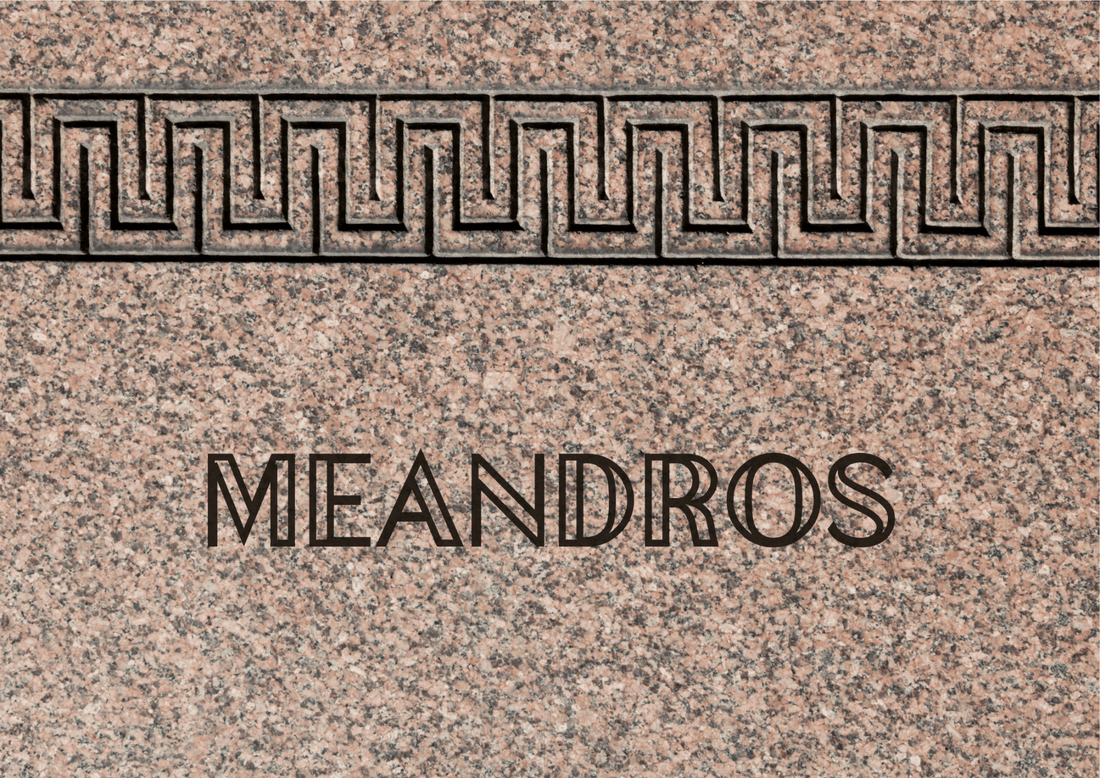We are delighted to continue the journey through our EUR Collection of printed Swedish dishcloths with a design as timeless as it is meaningful: the Greek Key. This ancient pattern, characterized by its continuous, interlocking lines, has adorned everything from classical temples to modern runways, embodying a sense of unity, infinity, and elegance that transcends time and culture. Its geometric precision and symbolic depth make it a perfect emblem for a collection rooted in European artistry and tradition.
The Greek Key—also known as the Meander or Meandros—finds its origins in the heart of ancient Greece, where it flourished as a decorative motif symbolizing eternity and the eternal flow of things. The pattern takes its name from the Maeander River in modern-day Turkey, known for its winding, labyrinthine path—a fitting inspiration for a design that suggests endless movement and connection. To the Greeks, the unbroken line represented unity, infinity, and the cyclical nature of life, concepts that resonated deeply in their art, architecture, and philosophy. Appearing on pottery, temples, and textiles, the Greek Key was more than mere ornamentation; it was a visual language speaking of balance, order, and the eternal.
Throughout the centuries, the Greek Key has gracefully transitioned from the friezes of the Parthenon to the forefront of contemporary design. In the world of fashion, this classic pattern has been embraced by luxury designers who appreciate its structured elegance and historical resonance. Iconic fashion houses such as Gucci, Versace, and Balmain have incorporated the Meander into their collections, using it to add a touch of Hellenic grandeur to garments, accessories, and even footwear. Its clean, linear aesthetic complements both classical and modern silhouettes, proving its versatility and enduring appeal. Beyond the runway, the pattern has also found a home in jewelry design, where its continuous form symbolizes never-ending love and commitment.
In architecture and interior design, the Greek Key remains a powerful symbol of refined taste and historical continuity. Throughout Europe, the motif can be seen gracing the neoclassical buildings of London, the ironwork of Parisian balconies, and the ceramic tiles of Mediterranean villas. In Greece, of course, it is everywhere—from ancient ruins to modern homes—serving as a proud reminder of cultural heritage. Contemporary interior designers frequently use the Greek Key in moldings, textiles, and flooring to introduce rhythm, order, and a touch of classical sophistication to living spaces. Its ability to blend seamlessly with both traditional and minimalist decor speaks to its timeless versatility.

The symbolic resonance of the Greek Key extends far beyond its aesthetic appeal. In ancient times, the pattern was believed to represent the labyrinth of life—a path full of twists and turns but ultimately leading to harmony and understanding. Today, it continues to be a symbol of unity and eternity, often used in weddings and celebrations to denote everlasting love and friendship. Its themes of continuity and connection have also made it a meaningful emblem for institutions such as fraternities and sororities in the academic world, where it symbolizes loyalty and eternal fellowship. In the public sphere, the pattern is incorporated into the logos and architecture of museums and cultural foundations, such as the Getty Villa in Los Angeles, which uses the motif to visually tie its classical art collections to a timeless aesthetic.
Whether in civic architecture, luxury branding, or academic insignia, the Greek Key continues to convey stability, tradition, and an unbroken connection to the past. And thus, we could never resist not introducing the Greek Key into our EUR Collection. Today, we invite you to welcome a piece of ancient wisdom and beauty into your home. For each dishcloth printed with this iconic pattern is not only a functional item but also a small work of art rich with history and meaning. It serves as a reminder that some designs are truly eternal, capable of bridging the gap between past and present, between culture and daily life. We hope that this timeless motif brings a sense of harmony, elegance, and continuity into your everyday rituals.


